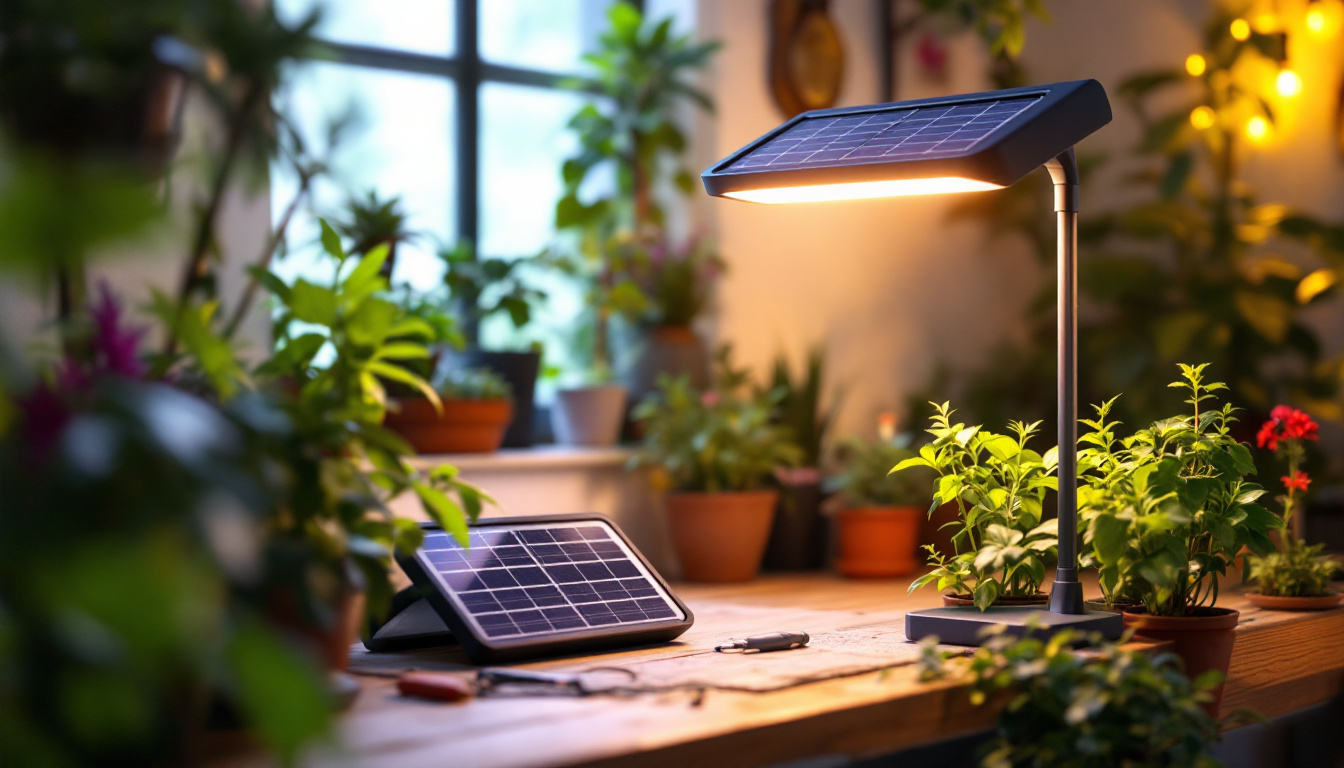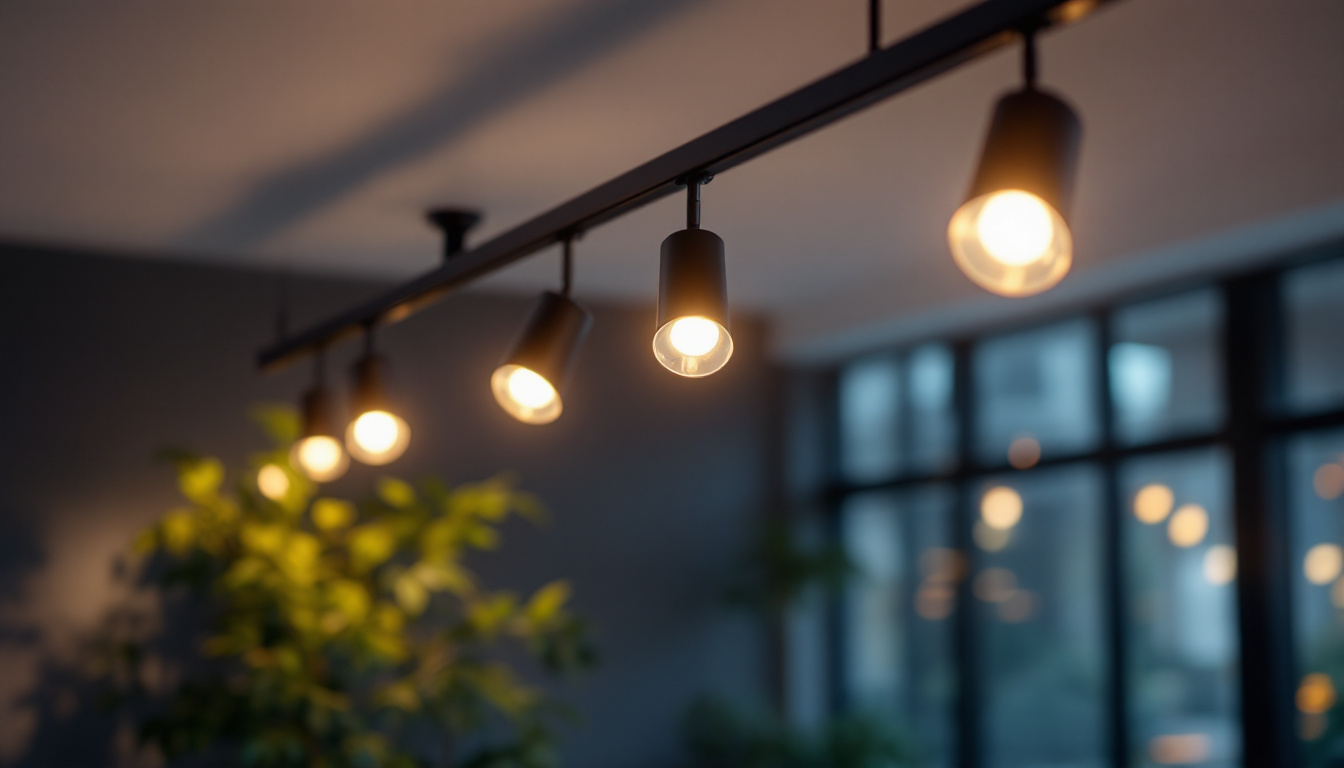
As the demand for sustainable energy solutions continues to rise, solar-powered grow lamps are becoming increasingly popular among horticulturists and indoor gardeners. These innovative lighting systems not only provide the necessary light for plant growth but also contribute to reducing energy costs and environmental impact. For lighting contractors, understanding the compliance requirements and technical specifications of solar-powered grow lamps is essential for successful implementation and client satisfaction. This article delves into the key aspects of solar-powered grow lamps, focusing on compliance, installation, and the unique considerations lighting contractors must keep in mind.
Solar-powered grow lamps harness energy from the sun, converting it into usable light for plants. These lamps typically consist of solar panels, LED lights, and a battery storage system. The solar panels collect sunlight during the day, which is then stored in batteries for use during nighttime or cloudy days. This technology not only promotes energy efficiency but also supports sustainable gardening practices. With the growing interest in eco-friendly solutions, solar-powered grow lamps are becoming increasingly popular among hobbyists and professional growers alike, as they allow for year-round cultivation without the hefty energy costs associated with traditional lighting systems.
To fully appreciate the functionality of solar-powered grow lamps, it is crucial to understand their main components:
Each of these components plays a vital role in the overall efficiency and effectiveness of solar-powered grow lamps. Understanding their function allows lighting contractors to better advise clients on the best systems for their specific needs. Additionally, advancements in technology have led to the development of smart solar-powered grow lamps that can be controlled via mobile apps, allowing users to adjust light intensity and timing based on the specific needs of their plants. This level of customization can significantly enhance plant growth and yield.
Solar-powered grow lamps offer several advantages that make them an attractive option for both residential and commercial applications:
Lighting contractors should emphasize these benefits when discussing solar-powered grow lamps with potential clients, as they can be key selling points. Moreover, the versatility of solar-powered grow lamps extends beyond just home gardening; they can also be used in community gardens, urban farms, and educational institutions, providing a practical solution for teaching sustainable practices. As more people become aware of the importance of local food production and environmental stewardship, the demand for such innovative solutions is likely to continue growing, making solar-powered grow lamps an essential tool in the modern gardener’s arsenal.
For lighting contractors, compliance with local, state, and federal regulations is paramount when installing solar-powered grow lamps. Understanding these regulations ensures that installations are safe, efficient, and legally compliant.
Each jurisdiction has specific building codes and standards that govern the installation of solar-powered systems. These codes often address:
Contractors must familiarize themselves with these codes to avoid potential fines and ensure the safety of their installations.
Before installing solar-powered grow lamps, contractors often need to obtain permits from local authorities. The permitting process may include:
Understanding the permitting process can streamline installations and prevent delays, ensuring that projects are completed on time and within budget.
Installing solar-powered grow lamps requires a unique set of technical skills and knowledge. Lighting contractors must consider several factors to ensure optimal performance and longevity of the systems.
Before installation, a thorough site assessment is crucial. This involves evaluating the following:
By conducting a comprehensive site assessment, contractors can design a system that maximizes energy collection and meets the specific needs of the plants being cultivated.
Proper installation techniques are vital for the performance and durability of solar-powered grow lamps. Key considerations include:
Contractors should follow best practices for installation to enhance the reliability and efficiency of the systems they install.
Regular maintenance is crucial for the longevity and efficiency of solar-powered grow lamps. Lighting contractors should educate clients on proper care and troubleshooting techniques to ensure optimal performance.
To keep solar-powered grow lamps functioning effectively, the following maintenance tasks should be performed regularly:
By performing these maintenance tasks, clients can extend the lifespan of their solar-powered grow lamps and maximize their return on investment.
Even with proper maintenance, issues may arise with solar-powered grow lamps. Contractors should be prepared to troubleshoot common problems, such as:
Providing clients with troubleshooting tips empowers them to address minor issues independently, enhancing their satisfaction with the system.
The solar-powered grow lamp industry is continually evolving, driven by advancements in technology and growing environmental awareness. Contractors should stay informed about emerging trends to remain competitive in the market.
Recent developments in solar technology are enhancing the efficiency and effectiveness of grow lamps. Some notable innovations include:
Contractors who keep abreast of these innovations can offer clients the latest solutions, enhancing their service offerings.
The demand for solar-powered grow lamps is expected to grow as more individuals and businesses seek sustainable gardening solutions. This presents numerous opportunities for lighting contractors:
By recognizing and capitalizing on these opportunities, lighting contractors can expand their business and contribute to a more sustainable future.
Solar-powered grow lamps represent a significant advancement in sustainable gardening technology. For lighting contractors, understanding the compliance requirements, technical considerations, and maintenance needs of these systems is crucial for successful installations and client satisfaction. By staying informed about emerging trends and innovations, contractors can position themselves as leaders in the industry, ready to meet the growing demand for solar-powered solutions. Embracing this technology not only benefits clients but also contributes to a more sustainable and environmentally friendly future.
Ready to lead the charge in sustainable gardening with solar-powered grow lamps? Look no further than LumenWholesale for all your lighting needs. Our extensive selection of spec-grade lighting products ensures that you have access to the highest quality options for your projects, all at unbeatable wholesale prices. Say goodbye to local distributor markups and hello to premium lighting with the convenience of free shipping. Make your next project shine with reliability and performance that only LumenWholesale can offer. Wholesale Lighting at the Best Value is just a click away. Enhance your service offerings and delight your clients with the best in the business.

Discover the top lighting solutions for garages that can elevate your contracting business.

Discover the transformative impact of changing ballasts in fluorescent lights on modern lighting design and installation.

Discover the essential insights lighting contractors need to master architectural track lighting.

Discover why purchasing bollard lights in bulk from local distributors might not be the best choice.